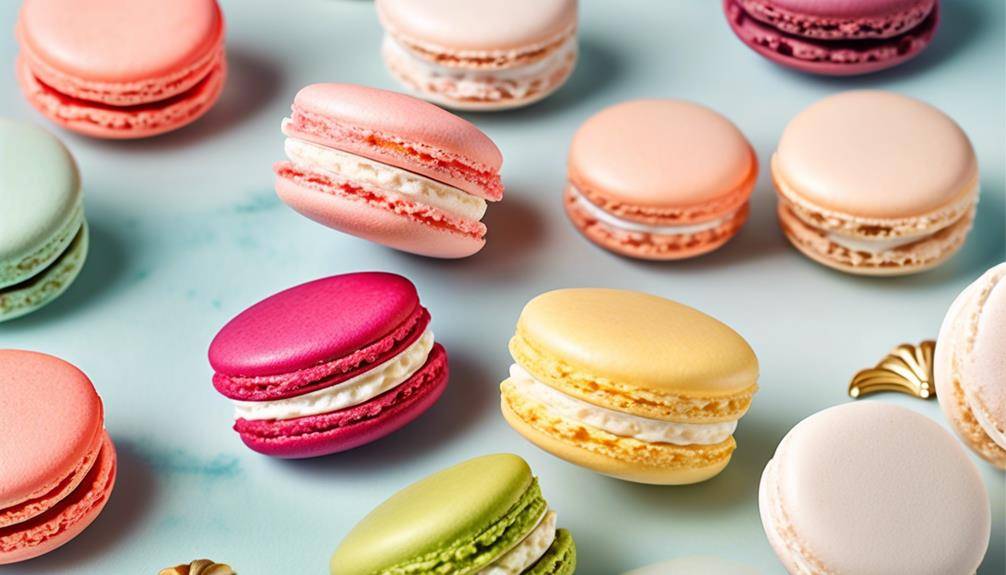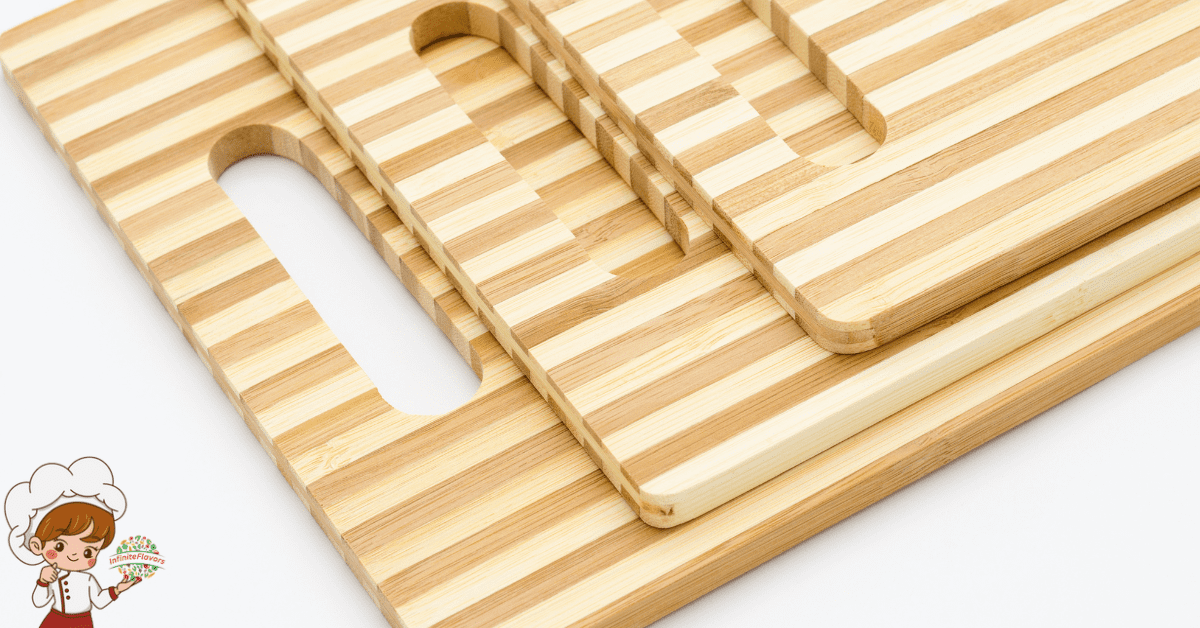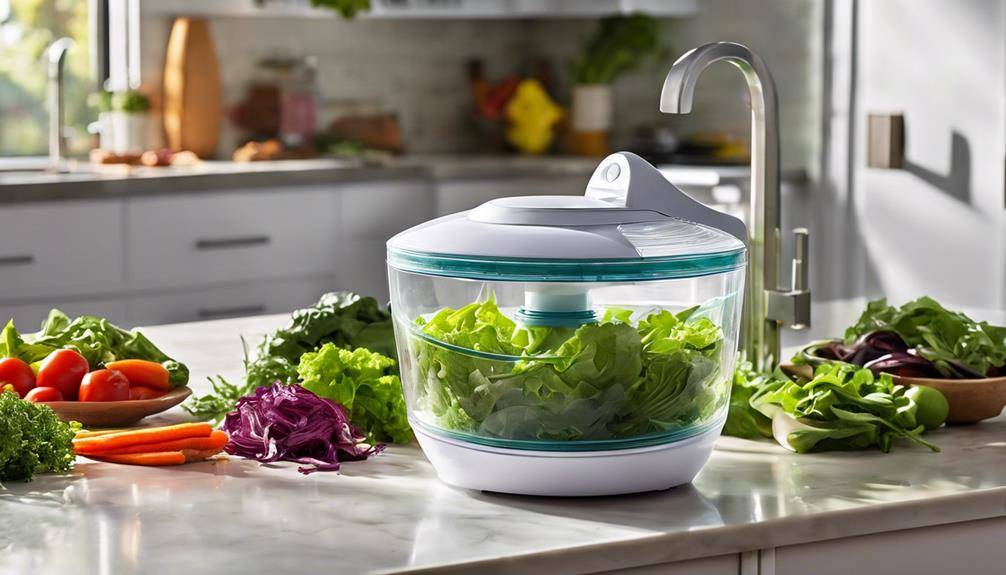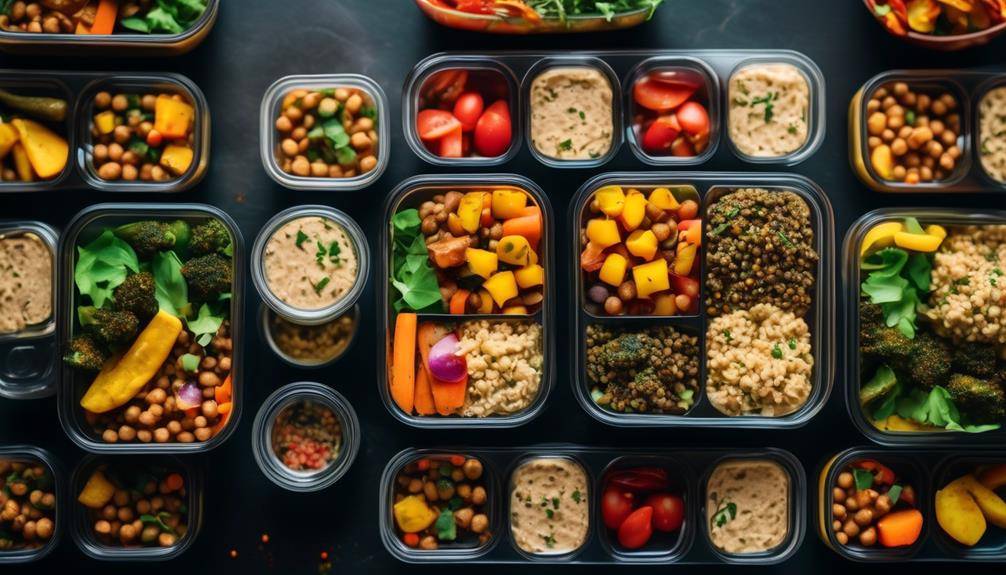The Best Techniques For Baking Macarons

They say that practice makes perfect, and when it comes to Baking Macarons, this adage couldn’t be more true. If you’ve ever tried your hand at these delicate French treats, you know that achieving that elusive perfect macaron can be a bit of a challenge. But fear not, for in this discussion, we will explore the techniques that will help you elevate your macaron game to new heights.
From selecting the right ingredients to mastering the art of macaronage, we will delve into the secrets of creating those irresistibly crisp shells and lusciously smooth fillings. So, get ready to take your baking skills to the next level as we uncover the secrets behind baking the perfect macarons.
Selecting the Right Ingredients
To ensure the perfect texture and flavor in your macarons, it is crucial to carefully select the right ingredients. Using alternative ingredients can be a fun and creative way to experiment with different flavors and textures. However, it is important to keep in mind that macarons are a delicate and precise dessert, and any substitutions may affect the final outcome.
When using alternative ingredients, it is essential to consider their moisture content and texture. For example, if you choose to use almond flour instead of the traditional ground almonds, make sure it is finely ground and has a similar moisture content. This will help maintain the characteristic chewiness of macarons.
Troubleshooting common ingredient issues is also an important aspect of baking macarons. One common issue is hollow macarons, which occur when the batter is too dry or when the oven temperature is too high. To avoid this, ensure that your almond flour is not too coarse and that you properly fold the dry ingredients into the meringue.
Another common issue is cracked macarons, which can be caused by overmixing the batter or by not allowing the macarons to rest before baking. To prevent this, mix the batter just until it reaches the proper consistency and let the piped macarons sit at room temperature for about 30 minutes before baking.
Properly Measuring Ingredients
Now let’s move on to the next crucial step in perfecting your macarons: properly measuring your ingredients. Measuring accuracy is essential when it comes to baking macarons. Even the slightest variation in measurements can affect the final outcome of your delicate treats. To ensure accuracy, it is recommended to use a kitchen scale for measuring your ingredients. This will provide you with precise measurements and eliminate any guesswork.
When measuring dry ingredients such as almond flour and powdered sugar, it is important to spoon them into the measuring cup and level it off with a straight edge. Avoid packing them down as this can lead to an excess amount of dry ingredients and affect the texture of your macarons.
For liquid ingredients like egg whites, it is best to use a measuring cup with clear markings and pour the liquid to the desired level. This will help you achieve consistency in your macaron batter.
Another aspect to consider is ingredient substitutions. While it is generally best to follow the recipe exactly, there may be times when you need to make substitutions. When substituting ingredients, it is important to take into account their weight and volume. For example, if you are substituting a liquid ingredient with a dry ingredient, you may need to adjust the proportions to maintain the right consistency of the batter.
Mastering the Macaronage Technique
Achieving the perfect macaron texture requires mastering the macaronage technique, a crucial step in the baking process. Macaronage refers to the process of combining the almond flour and powdered sugar mixture with the whipped egg whites to create the smooth, shiny, and slightly runny batter that is the foundation of a well-made macaron. When done correctly, macaronage ensures that the macarons have a smooth top, a delicate foot, and a light and airy interior.
However, mastering the macaronage technique can be challenging, and many bakers encounter issues along the way. One common problem is over-mixing the batter, which can result in flat, lumpy macarons. On the other hand, under-mixing can lead to cracked or hollow shells. To troubleshoot these issues, it is helpful to watch a macaronage video tutorial to understand the correct consistency of the batter. The ideal macaron batter should flow like lava and form a ribbon that disappears into the rest of the batter within 15-20 seconds.
To achieve the perfect macaronage, start by gently folding the almond flour and powdered sugar mixture into the whipped egg whites using a rubber spatula. Use a technique called the “macaronage fold,” where you scrape the sides and bottom of the bowl and then fold the batter over itself until it becomes smooth and shiny. Be careful not to overmix or undermix the batter.
Mastering the macaronage technique is essential in creating beautiful and delicious macarons. By troubleshooting common issues and following a macaronage video tutorial, you can achieve the perfect texture and appearance of these delicate treats. So, roll up your sleeves, grab your spatula, and start practicing your macaronage skills to impress your friends and family with your homemade macarons.
Achieving the Perfect Meringue
To achieve the perfect meringue for your macarons, start by whipping the egg whites to stiff peaks using a stand mixer or hand mixer. Be careful to incorporate the sugar slowly and gradually, adding it in small increments as you continue to whip the egg whites. This will help create a stable and airy meringue that is essential for achieving the desired texture of your macarons.
Whipping Egg Whites
Start by whisking your egg whites until they reach a glossy and stiff peak consistency. This is a crucial step in achieving the perfect meringue for your macarons. When whisking, make sure to use a clean, dry bowl, as any traces of fat or moisture can hinder the whipping process. Begin at a low speed and gradually increase it to medium-high. This will help to incorporate air into the egg whites and create volume. To ensure that your meringue is stable, add a pinch of cream of tartar or a few drops of lemon juice before whisking.
These ingredients help to stabilize the egg whites and prevent them from deflating. If your meringue is not reaching stiff peaks, it could be due to over-whipping or under-whipping. Over-whipped egg whites can result in a dry and grainy texture, while under-whipped egg whites won’t hold their shape. Keep an eye on the texture and stop whisking once the peaks hold their shape when the whisk is lifted. By following these whipping techniques and troubleshooting tips, you’ll be on your way to achieving the perfect meringue for your macarons.
Incorporating Sugar Carefully
Carefully incorporate the sugar into the egg whites to achieve the perfect meringue consistency for your macarons. This step is crucial in creating the light and airy texture that is characteristic of macarons. When adding the sugar, it is important to do so gradually, ensuring that each addition is fully incorporated before adding more. Use a rubber spatula to gently fold the sugar into the egg whites, making sure to scrape down the sides of the bowl to ensure even mixing.
The key is to be gentle and avoid overmixing, as this can deflate the egg whites and result in a dense meringue. Take your time and fold the sugar in carefully until it is fully combined, creating a smooth and glossy meringue.
Preparing the Macaron Batter
Using the proper technique when preparing the macaron batter is crucial for achieving the perfect texture and appearance of these delicate French cookies. One of the most important aspects to consider is the macaron batter consistency. The ideal macaron batter should be thick, smooth, and glossy. It should flow slowly and form a figure-eight shape when it falls from the spatula. If the batter is too runny, it will spread too much during baking and result in flat macarons. On the other hand, if the batter is too thick, it will be difficult to pipe and may not spread enough, resulting in cracked macarons.
To troubleshoot macaron batter consistency, there are a few things you can do. If your batter is too runny, try folding in a little more almond flour or powdered sugar. This will help absorb some of the excess moisture and thicken the batter. If your batter is too thick, add a small amount of egg whites and continue folding until you reach the desired consistency.
Another common issue with macaron batter is over-mixing. It is important to fold the ingredients gently and just until they are fully incorporated. Over-mixing can result in a batter that is too thin and lacks structure. To avoid this, use a spatula to fold the dry ingredients into the meringue in a slow and deliberate motion. Stop folding as soon as the batter is smooth and flows off the spatula in a thick ribbon.
Piping Techniques for Perfect Shells
To achieve perfect macaron shells, it is essential to master the art of piping. Piping is the technique of squeezing the macaron batter onto the baking sheet in a precise and controlled manner. This step determines the size, shape, and texture of your macarons. Here are some piping techniques and troubleshooting tips to help you achieve flawless macaron shells.
First, make sure you have the right piping bag and tip. A silicone piping bag with a 1/2 inch round tip is recommended for macarons. This will give you more control and allow for better precision when piping.
Next, hold the piping bag at a 90-degree angle to the baking sheet. Apply even pressure to the bag while squeezing out the batter. Start piping from the center of the marked circle and work your way outwards in a circular motion. Keep the pressure consistent to ensure uniformity in size and shape.
When piping, make sure to leave enough space between each macaron shell to allow for spreading during baking. A good rule of thumb is to leave about 1 inch of space between each shell.
If you encounter any issues while piping, such as uneven shapes or cracked shells, here are some troubleshooting tips. If your shells are cracking, it could be due to overmixing the batter or not letting it dry long enough before baking. If your macarons are spreading too much, try increasing the resting time before baking or decreasing the amount of liquid in the batter.
Mastering the art of piping is crucial for achieving perfect macaron shells. By following these piping techniques and troubleshooting tips, you will be well on your way to creating beautiful and delicious macarons.
Resting and Drying the Macarons
Now that you have piped your macaron shells, it’s time to let them rest and dry. Resting time is crucial for macarons to develop their signature feet and smooth, shiny surface. During this time, the macarons will form a dry skin on the surface, which helps them rise evenly in the oven. To achieve the best results, allow your macarons to rest for at least 30 minutes to 1 hour before baking.
Resting Time
Resting and drying the macarons is an essential step in achieving the perfect texture and flavor. After piping the macaron shells onto the baking sheet, it is important to let them rest for about 30 minutes to an hour. This resting time allows a thin skin to form on the surface of the shells, which is crucial for creating the characteristic “feet” of the macarons. Additionally, this resting period helps to develop the flavor and texture of the macarons.
During the drying time, it is important to take note of certain troubleshooting tips. If the macarons are not drying properly, it could be due to high humidity in the environment. In this case, you can use a dehumidifier or place the macarons in an air-conditioned room to speed up the drying process. On the other hand, if the macarons are drying too quickly, it could be a sign that the oven temperature is too high. Adjust the temperature accordingly to prevent browning or cracking of the shells. Resting and drying the macarons may require some patience, but it is definitely worth the wait for that perfect texture and flavor.
Drying Techniques
After allowing the macarons to rest and develop their flavor, the next step is to ensure proper drying techniques to achieve the desired texture and appearance. Drying the macarons is crucial as it helps them develop a smooth, crisp shell while maintaining a soft and chewy interior. To achieve this, you need to focus on two key factors: air circulation and humidity control.
Firstly, ensure that there is adequate air circulation in the drying area. This can be achieved by placing the macarons on a wire rack or perforated baking sheet. This allows air to circulate around the macarons, helping them dry evenly and preventing any moisture buildup.
Secondly, control the humidity in the environment. Macarons are sensitive to moisture, so it’s important to dry them in a relatively dry environment. Avoid drying them on humid or rainy days, as this can cause the macarons to absorb moisture from the air, resulting in a sticky or hollow texture.
Baking and Cooling Tips
To ensure the perfect texture and appearance of your macarons, follow these expert baking and cooling tips. When it comes to baking macarons, timing is crucial. Preheat your oven to the precise temperature and make sure to set the timer accordingly. Baking time is typically around 12-15 minutes, but it may vary depending on your oven, so keep a close eye on them. Overbaking can result in dry and brittle macarons, while underbaking can cause them to be overly soft and chewy.
If you encounter common issues during baking, troubleshooting is key. If your macarons have cracked tops, it could be due to overmixing the batter or not allowing the macarons to dry properly before baking. To prevent this, be sure to follow the recipe instructions carefully and let the macarons rest until a skin forms on the surface. If your macarons are hollow, it might be because the oven temperature was too high or the batter was overmixed. Adjusting the temperature and being mindful of the mixing process can help resolve this issue.
After baking, it’s imperative to cool your macarons properly. Allow them to cool completely on the baking sheet before attempting to remove them. This will prevent them from sticking and potentially breaking. Once cooled, gently lift the macarons off the sheet using a spatula.
Filling and Assembling the Macarons
If your macarons have cooled properly, it’s time to move on to filling and assembling them. Assembling macarons requires careful attention to detail to ensure a perfect final product. Here are some assembling techniques to help you achieve macaron perfection.
First, select the filling flavors that complement your macaron shells. Popular options include chocolate ganache, fruit curd, buttercream, and even ice cream. The filling flavors can be customized based on your personal preference and the occasion you’re making the macarons for.
To assemble the macarons, match the shells of similar sizes and shapes. This will help ensure uniformity in appearance and texture. Place a small dollop of filling on the flat side of one shell. Then, gently press another shell on top to create a sandwich. Repeat this process until all the macaron shells are filled.
It’s important to be gentle when assembling the macarons to avoid crushing or cracking the delicate shells. Use a light touch and apply even pressure to ensure the shells stick together without compromising their texture.
Once the macarons are assembled, it’s best to let them rest in the refrigerator for at least 24 hours. This allows the flavors to meld together and the shells to soften slightly, resulting in a more enjoyable eating experience.
When serving the macarons, you can store them in an airtight container in the refrigerator for up to a week, although they are best enjoyed within a few days.
Baking Macarons; Frequently Asked Questions
How Long Can Macarons Be Stored For?
Macarons can be stored for up to one week. To maximize their shelf life, keep them in an airtight container at room temperature. Avoid moisture, heat, and direct sunlight to ensure their freshness.
Can I Use Liquid Food Coloring Instead of Gel Food Coloring?
Liquid food coloring can be used instead of gel food coloring for macarons, but it may affect the texture and taste. Gel food coloring is preferred as it is more concentrated and doesn’t add excess liquid.
Can I Substitute Almond Flour With Another Type of Nut Flour?
Yes, you can substitute almond flour with other types of nut flour like hazelnut or pistachio flour. These alternatives will give your macarons a unique flavor and texture. Experiment and find your favorite!
What Can I Do if My Macarons Turn Out Hollow?
If your macarons turn out hollow, try adjusting the baking time and temperature, as well as the drying time. Make sure to use a precise macaronage technique and avoid overmixing. These tips can help you achieve a perfect macaron shell.
Can I Freeze Macarons for Later Consumption?
Yes, you can freeze macarons for later consumption. To store them properly, place them in an airtight container or freezer bag and make sure to separate each macaron layer with parchment paper to prevent sticking.
Conclusion
In conclusion, mastering the techniques for baking macarons requires careful attention to detail and precision. By selecting the right ingredients, properly measuring them, and mastering the macaronage technique, you can achieve the perfect meringue and prepare a smooth macaron batter. Piping the batter in the right way, resting and drying the macarons, and following proper baking and cooling tips are crucial for creating perfect macaron shells. Finally, filling and assembling the macarons completes the process, resulting in delicious and beautiful treats.








